









(via A Rare “Quad Headlight” Jaguar E-Type)
from Tumblr https://somar78.tumblr.com/post/665737598930649088
This article was written by Walt Siegl of Walt Siegl Motorcycles. When possible we like to bring you the story of a vehicle in the words of the person who built it, to cut out the middle man and give you direct insight into their thought process and methods.
I built this SBK the way I would have built it for myself, and that’s exactly what the owner asked me to do: Build the bike I would want to own.
In fact, I actually used the engine that Bruce Meyers built for my personal SBK (that I never got around to building). I love Ducati’s long stroke motors, but instead of a big monster Corsa engine, I wanted an engine that is as spritely and responsive as possible, matching the lightness and agility of my SBK chassis.
The idea behind the SBK was to build a machine as agile as possible, that steers significantly better than anything you can buy off the showroom floor. Such a bike allows its owner to become a better rider.
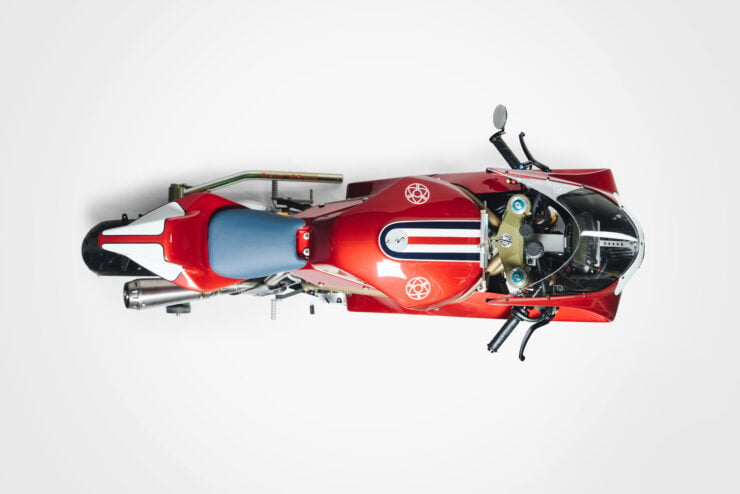
Although he’s often classified as a custom motorcycle builder it’s more accurate to say that Walt is a motorcycle designer. He often designs and builds everything from the frame on up, resulting in an entirely unique bike.
Because riding well and having fun is what it’s all about. High horsepower engines are not necessarily really conducive to having fun.
That’s why I picked this engine configuration: 848 crank case, lightened and balanced crank with updated crank bearings, titanium connecting rods, 1040 big bore kit with Pistal race pistons, ported and flowed cylinder heads with high lift cams, lightened 1098 gears with open clutch housing. It picks the throttle up like a shotgun blast. The engine breathes through a WSM carbon fiber airbox and ram air tubes.
Suspension is Ohlins all around. Since the bike weighs only 328 lbs wet, the front forks are specially built for the weight of this bike, with lighter springs and custom designed shim stock. The rear shock received the same treatment.
The electronics includes custom made fuel, air delivery, and engine speed map. Traction control and quick shift. I’m always trying to build the perfect machine, but I don’t want to give up the visual clues to the fact that a big part of my bikes are designed by me and built with my hands.
This is always a conversation I have with myself: Which components should carry that visual language of the handmade. I worry sometimes that some streamlined, high-tech looking parts might lose that visual aspect, of all the love and effort that I put into these machines. Also, because of the demands of a race bike, not all components can be made by hand.
The one request the owner had was color choice. He sent me a picture of a Ferrari SP2 painted in a limited color. It’s always a bit tricky to try to transfer color combinations that work on a car onto motorcycles. It’s not always successful.
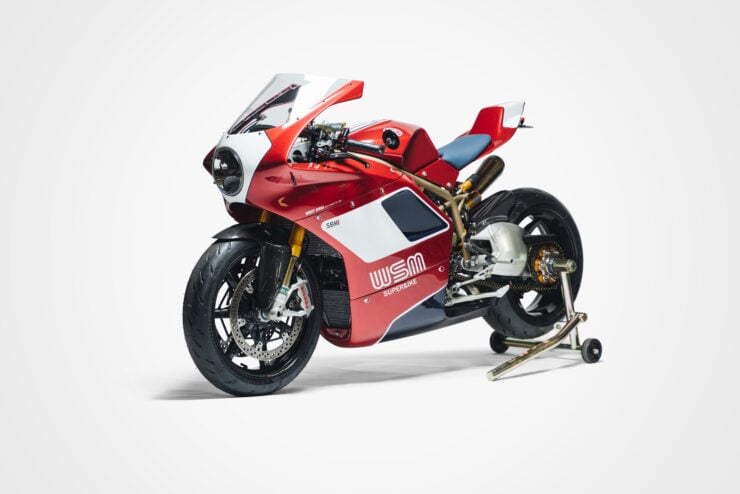
Walt Siegl’s SBK series of motorcycles look like official factory prototypes or concept bikes designed for the show circuit, but they’re also exceptionally quick on track.
Cars, with their big panels, reflect light and show shadows much differently than on bikes, since bikes have much more intricate surfaces. But it was definitely a risk worth taking, and I think it really works for the SBK.
Visit Walt Siegl’s website here
Follow him on Instagram – Facebook
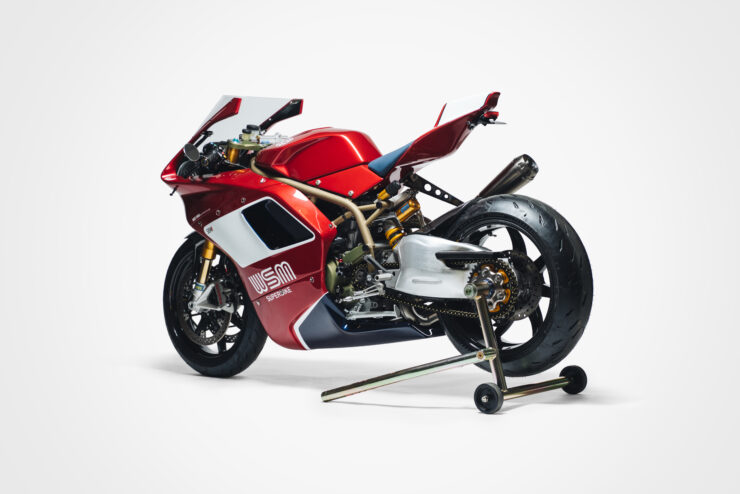
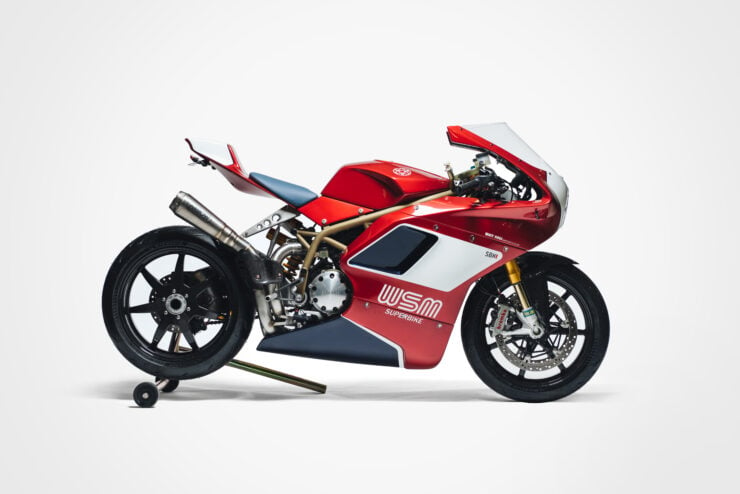
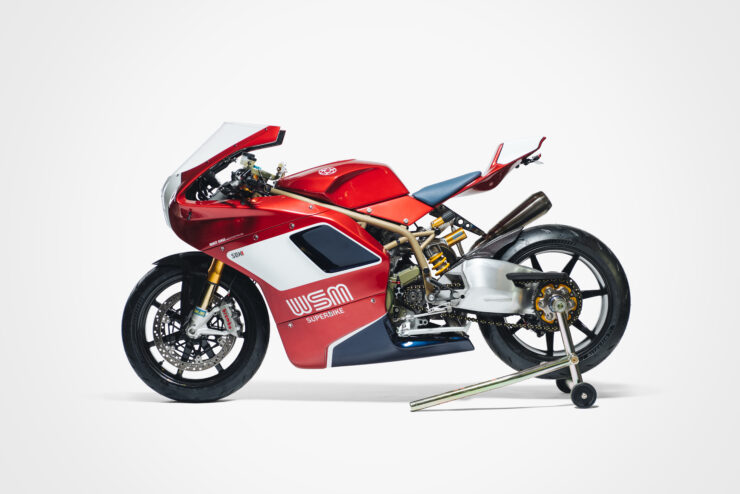
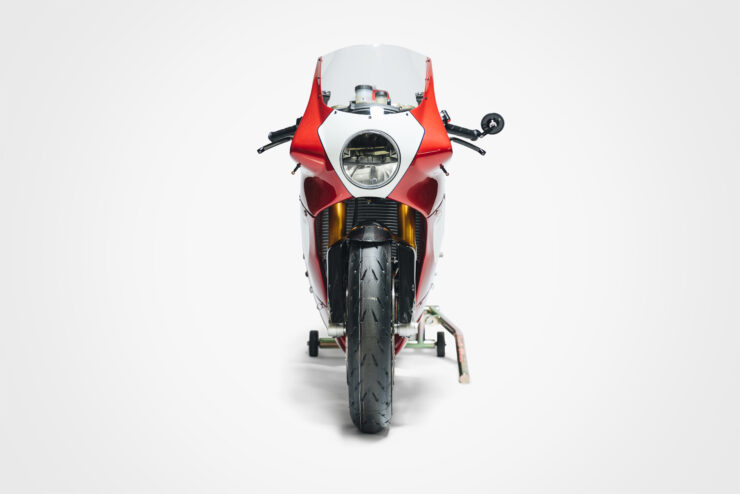
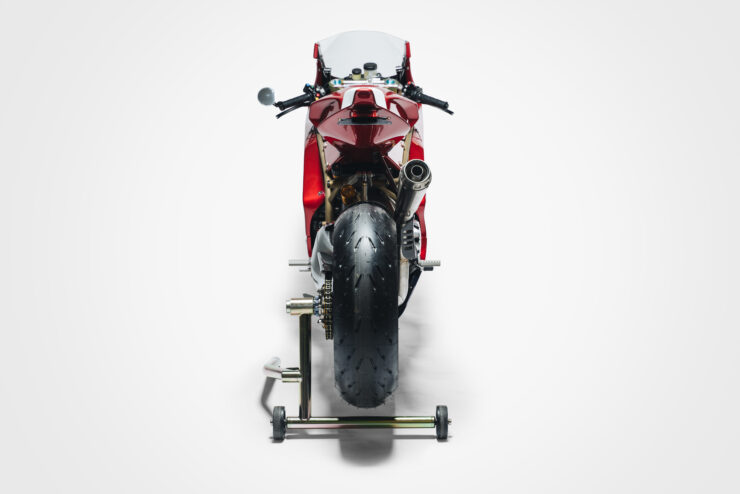
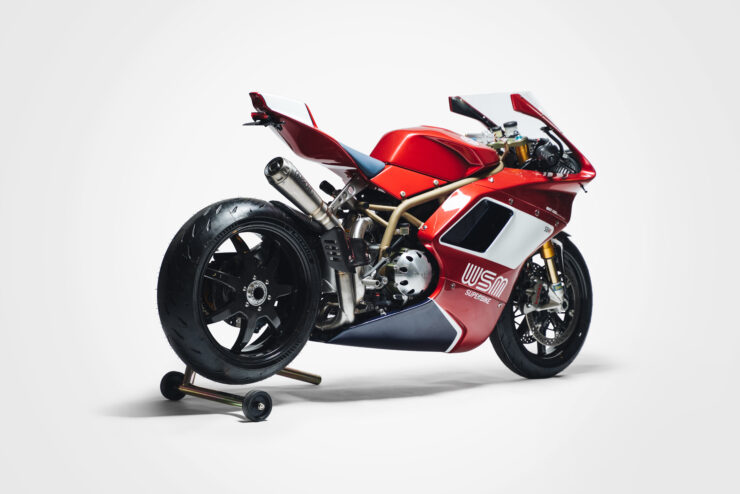
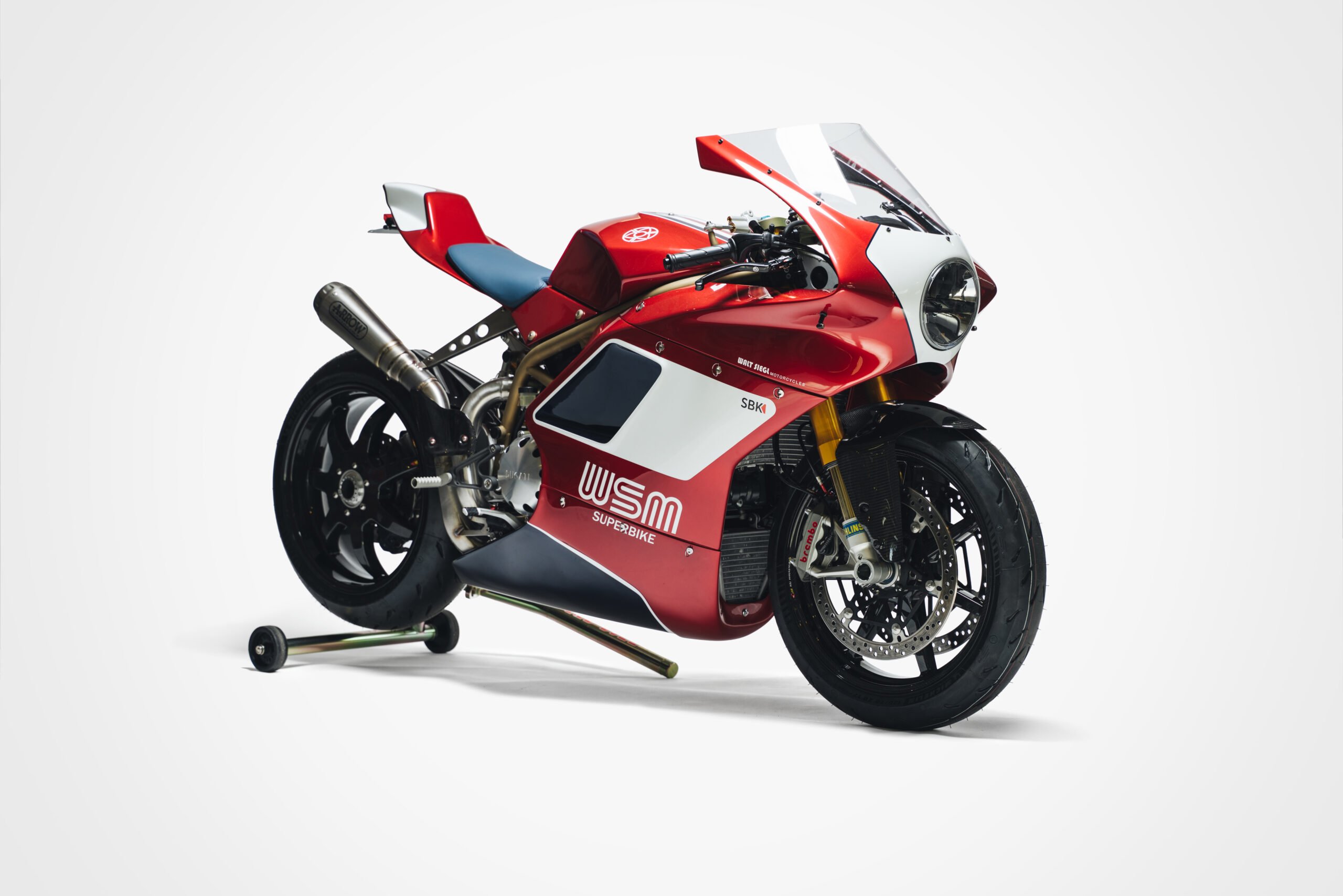
The post Custom Built Superbike Perfection: The Walt Siegl SBK Nr4 appeared first on Silodrome.
The rare Bocar XP-5 is the work of Bob Carnes, a racing driver and self-taught engineer who enjoyed much success in the Denver, Colorado area racing his Porsche 550 Spyder and his Jaguar XK120. Never one to sit still, Carnes modified his XK120 and fitted it with a Cadillac V8 for more power, dubbing it the “Jagillac.”
He began to realize that if he could build a car that had the best features of the Porsche with the best features of his own V8 Jaguar, he would have the perfect race car. Starting in 1957 he set out to design and build a V8-powered American answer to the 550 Spyder, creating one of the most memorable low-volume production sports cars of the time.
When Carroll Shelby hatched his plan for the Shelby Cobra in the early 1960s he was almost certainly influenced by the cars of Sydney Allard, but you have to wonder if he was also inspired by the little-known Bocar XP-5 by Bob Carnes.
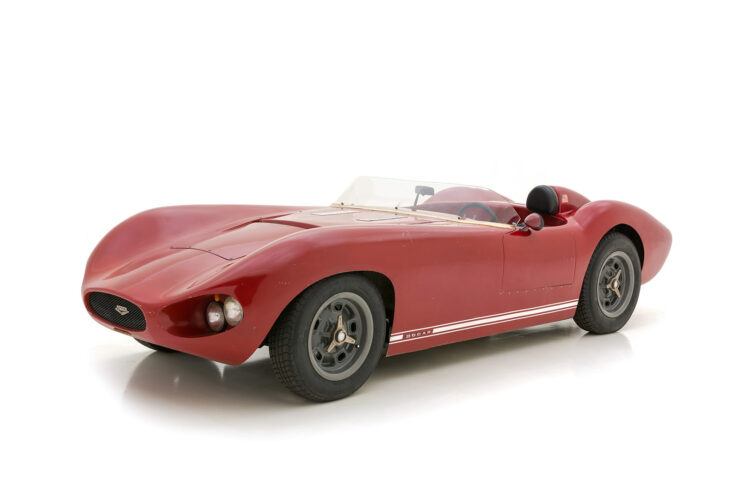
The styling of the Bocar XP-5 is immediately recognizable and hard to forget. The car sits just 34 inches high.
Lightweight European-style sports cars with good handling proved an ideal match for powerful American V8 engines, and a number of companies were founded to marry these two, creating some of the fastest cars of the era.
Bob Carnes’ first major foray into building his own sports car from the ground-up started with the XP-1 (eXperimental Prototype 1) in 1958 with a naming convention that may have been inspired by the supersonic Bell X-1 rocket plane of 1946
Carnes was learning as he went so the XP-1 was closely followed by the XP-2, and the XP-3, before the arrival of the XP-4, of which approximately five are believed to have been built.
The Bocar XP-5 arrived in mid-1959, it incorporated all of the lessons learned in the earlier prototypes, it was built around a chromoly tubular steel space frame chassis and the body was made from fiberglass, still a cutting edge material in the 1950s that made low-volume car manufacturing far more viable for smaller companies like Bocar.
Above Video: This short film is about Doug Karon and his Bocar XP-5 continuation.
Most XP-5s were powered by the 283 cubic inch Corvette V8 engine producing 290 hp, with power sent back through a manual transmission to the rear wheels. The XP-5 is just 34 inches tall and it has a four inch high windscreen, the curb weight varied based on specifications, however most cars tipped the scales at around 1,650 to 2,100 lbs.
As you may have guessed, performance was brisk. The Corvette-powered XP-5 could do the 0 to 60 mph dash in under 6 seconds and onto a top speed in the region of 160 mph. Racing versions of the car provided highly competitive, an XP-5 driven by Art Huttinger in the first televised Daytona race in 1960 came second only to the D-Type Jaguar of Ed Rahal, with the XP-5 clocking a speed record of 175 mph on Daytona beach.
Carnes had developed the XP-6 and was working on the XP-7 when the Bocar facility was destroyed by a fire in 1962, this resulted in the destruction of all the moulds, jigs, and everything else that was needed to build the cars, and it resulted in Bocar permanently shutting down.
The surviving examples of the original Bocar vehicles are now highly collectible, with asking prices now stretching to over $250,000 USD in some cases.
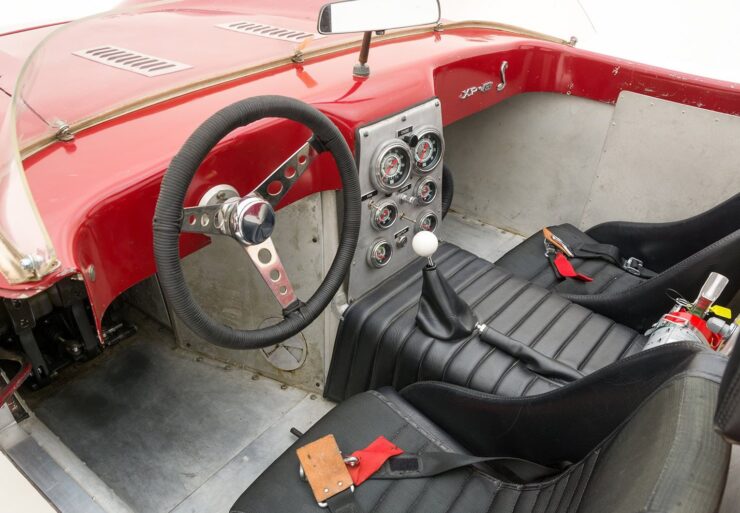
The interior has seating for two, these cars were designed to race so very little attention was paid to luxuries.
The car you see here has been credited with being the inspiration for the Bocar XP-6, it was originally purchased by a personal friend of Bob Carnes but being quite tall he didn’t fit into a standard XP-5. As a result he stretched the chassis by 12 inches and modified the body to match.
The project took a number of years as work was being done on it part time, by 1965 it was ready for completion and the owner opted for a 289 cubic inch Hi-Po Ford V8 crate engine mated to a T-10 four-speed transmission supplied by Garnsey & Wheeler.
Not long after completing it the car was sold to a new owner, it was then used as a display vehicle in Ford dealerships to show off the capabilities of the Ford V8.
In 2015 the car was sold on to a new owner who chose to mechanically overhaul the car while keeping the original patina intact, a historically sensible choice for such a rare and unusual classic.
The car is now for sale through Hyman Ltd with an asking price of $259,500 USD, if you’d like to read more about it or register to bid you can click here to visit the listing.
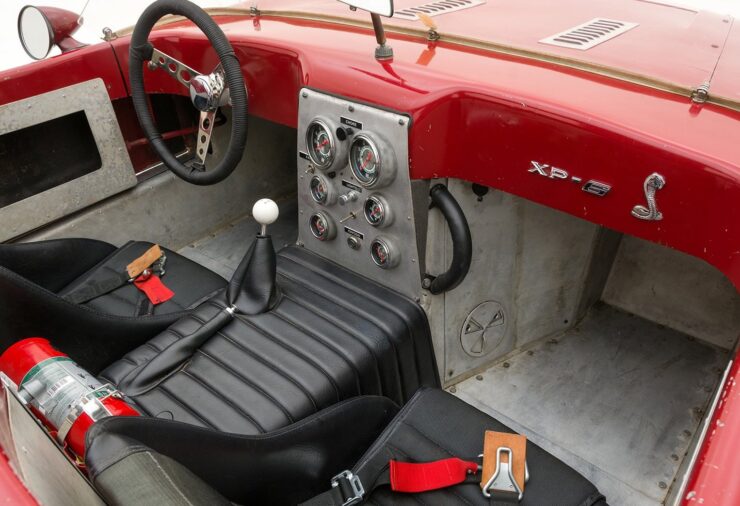
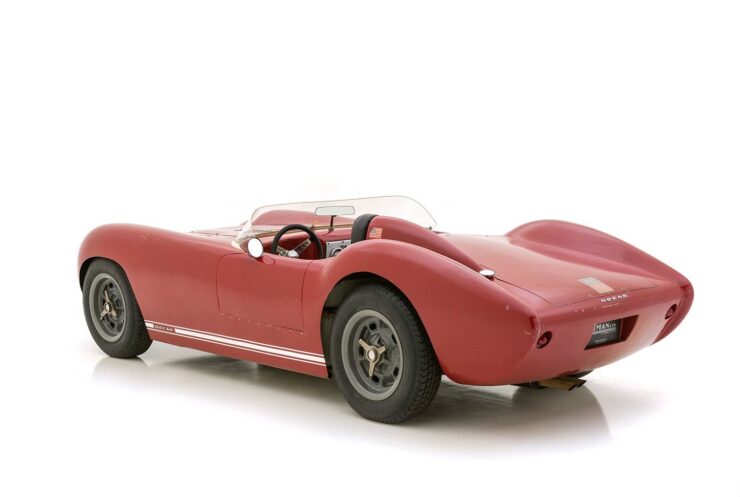
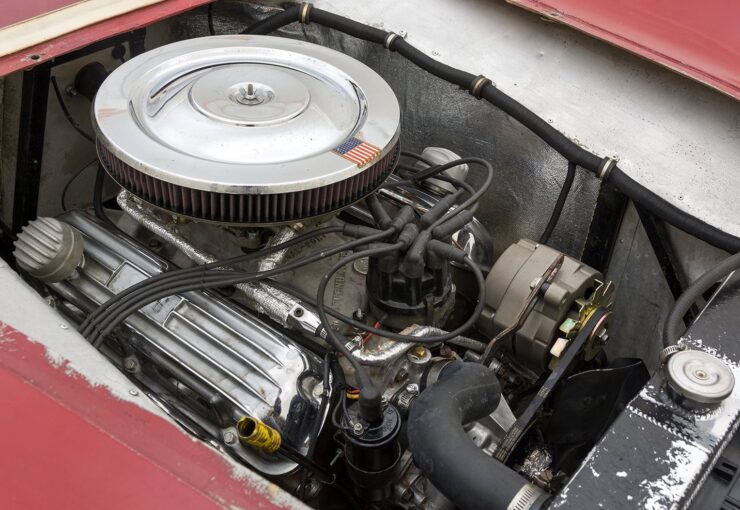
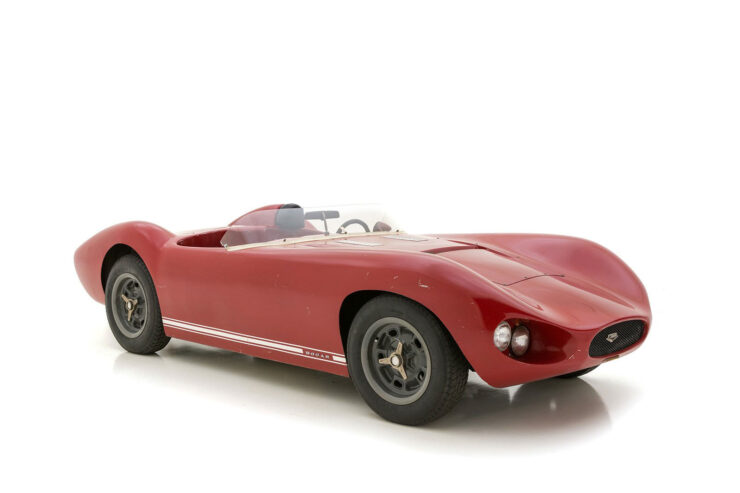
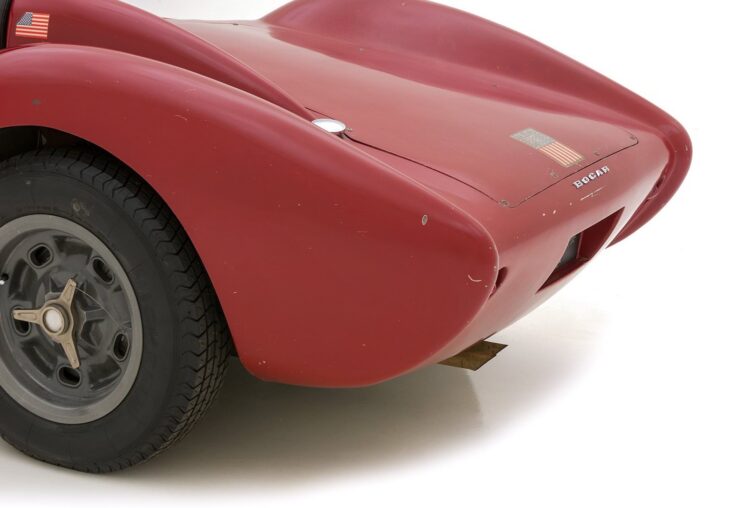
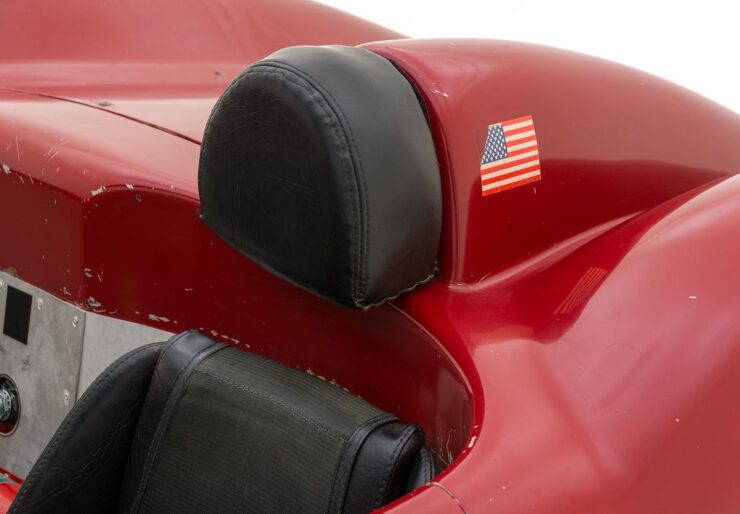
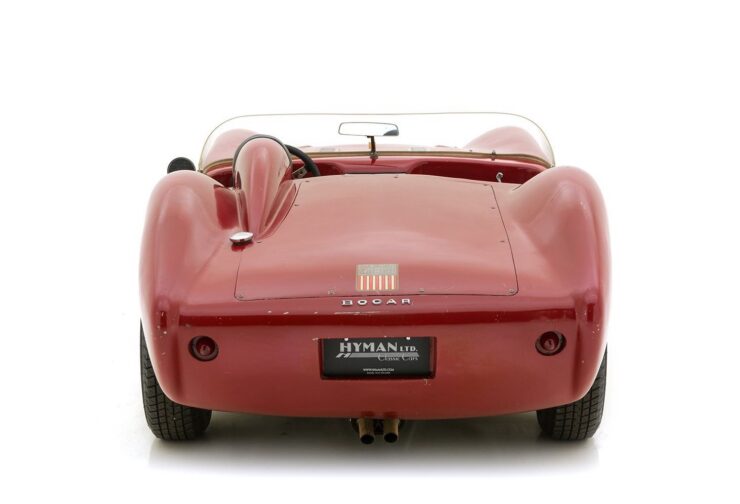
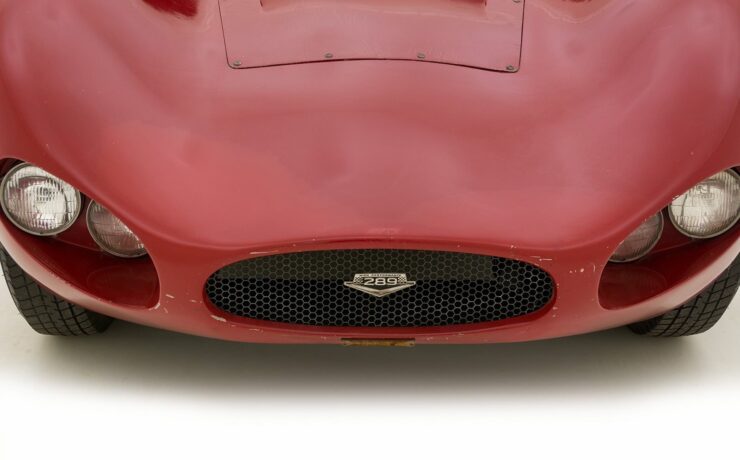
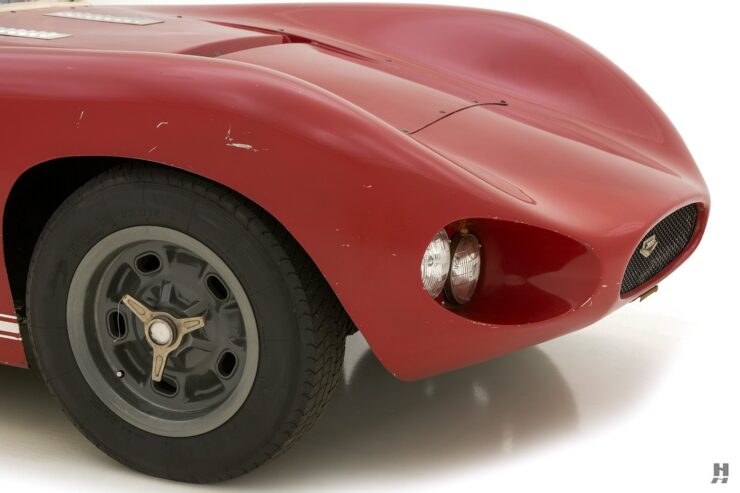
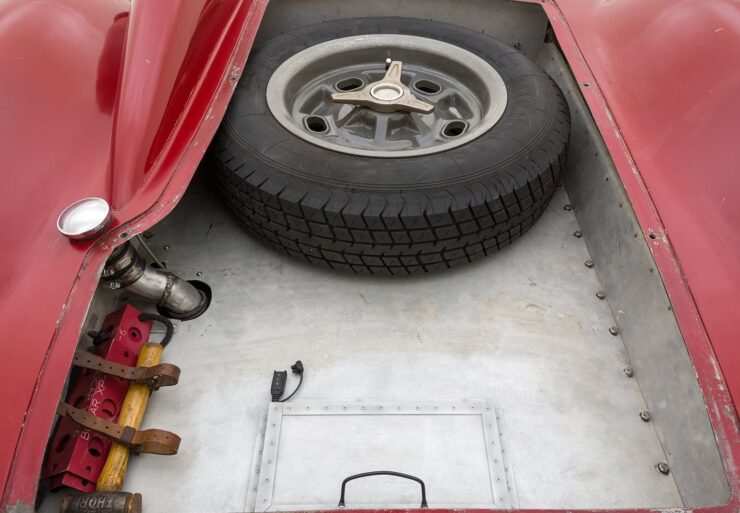
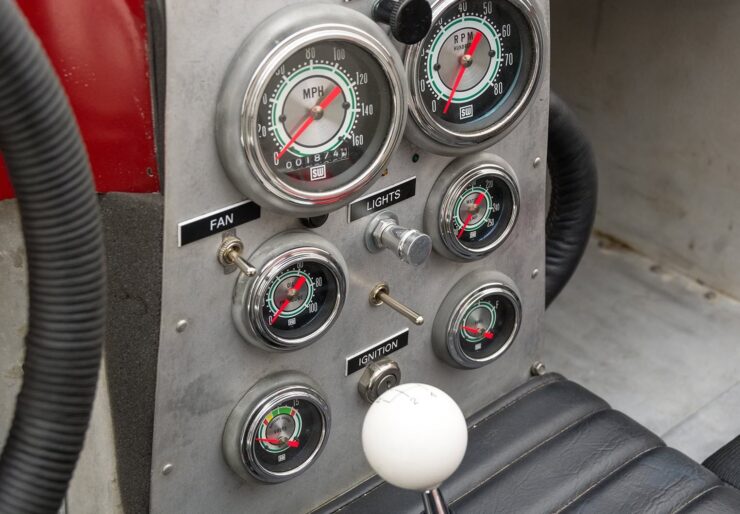
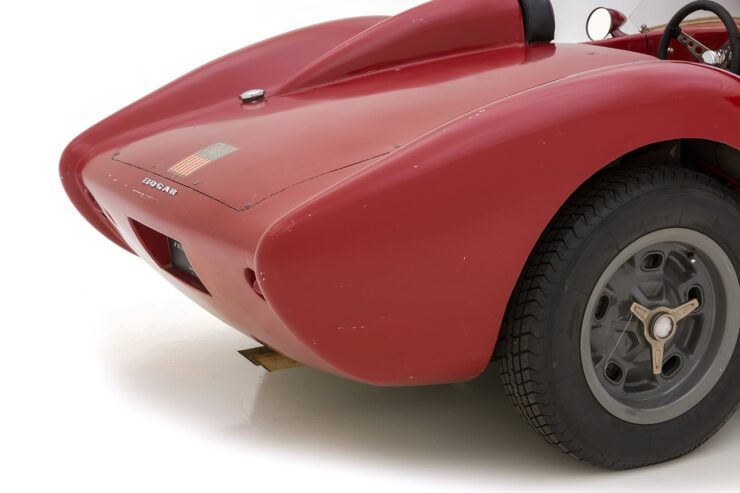
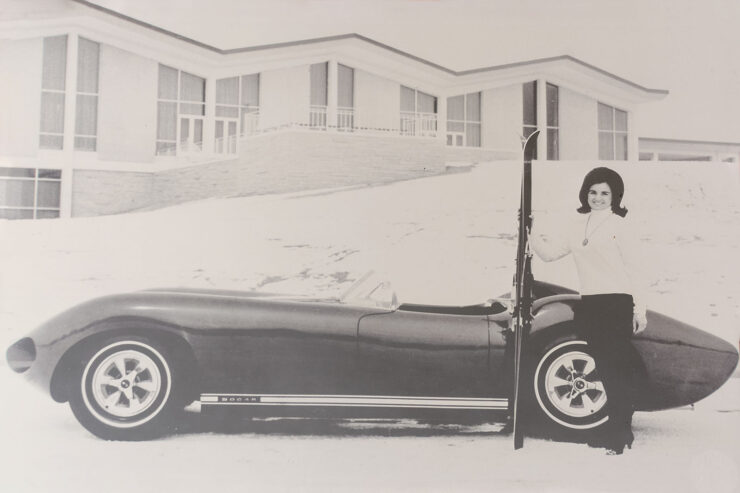
Images courtesy of Hyman Ltd
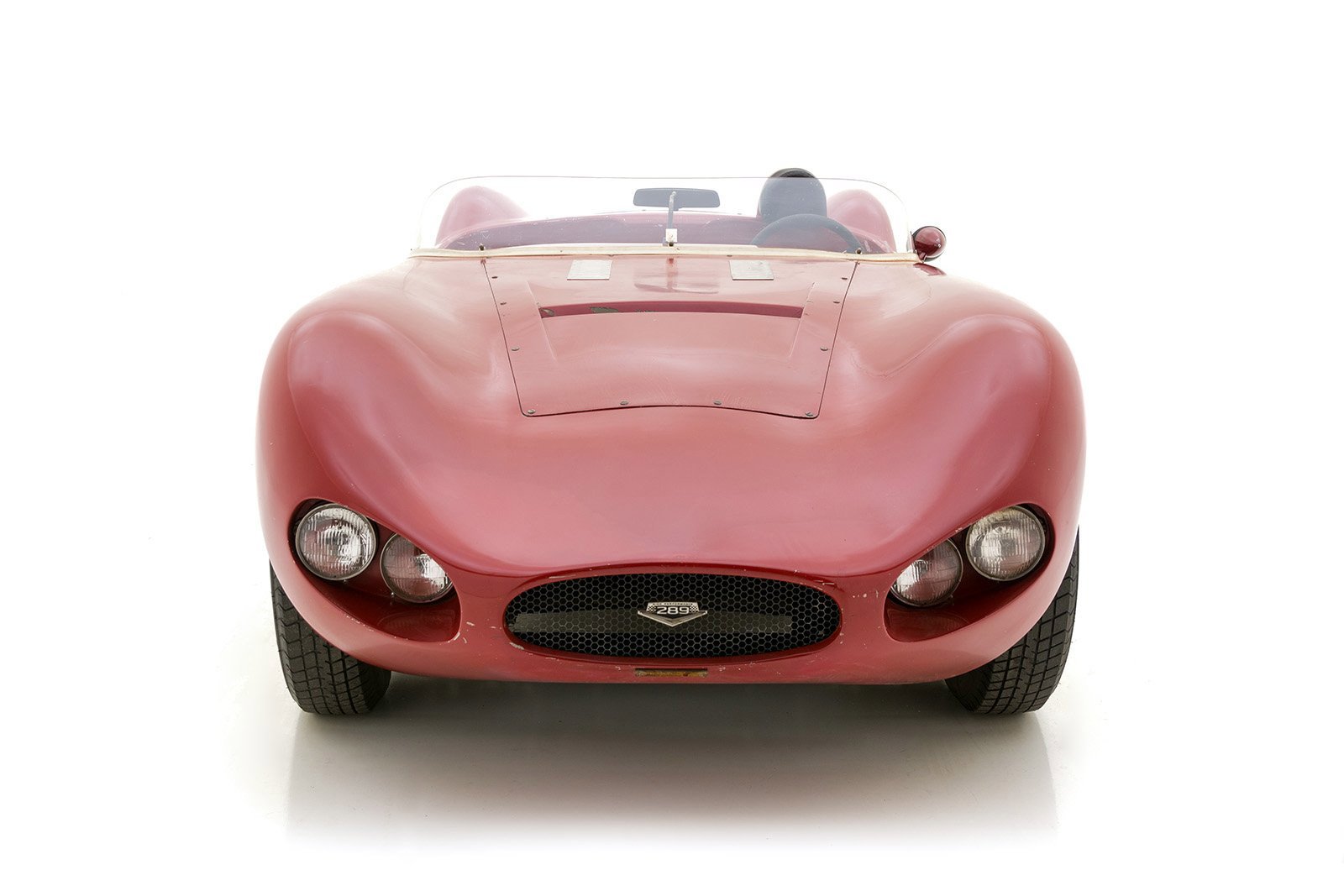
The post The Bocar XP-5 – The American V8 Answer To The Porsche 550 Spyder appeared first on Silodrome.
The Piranha III is one of the best-selling buggy designs in the history of well-known Australian company The Edge Products, this kit provides everything you need to built one at home with the exception of the engine and radiator.
Most people source an engine from a crashed or otherwise incapacitated superbike, these engines comes with a transmission built in of course, and many builders also take the radiator.
Depending on the superbike, these engines can provide 100 to 180+ hp, which is enough to build an eye-waveringly quick buggy.
The Edge Products has been designing and building off-road racing buggies in Perth, Western Australia since 1989.
Above Video: Footage of a Piranha buggy doing the hill climb at the Maramarua Gravel Rash in 2015.
Thanks to the speed, toughness, and affordability of their buggies they’ve risen to become world leaders in their field, with people having bought or build Edge buggies in a vast array of countries around the world.
The Piranha III has a tubular steel spaceframe chassis that incorporates a full roll cage for safety, it has independent front and rear suspension with long-travel coil over shock absorbers, front and rear disc brakes, and rack and pinion steering.
Superbike engines from 600cc to 1000cc can be fitted, offering up to (and over) 180 hp, giving the 400 kg (880 lb) buggy a 0 to 62 mph time of 5.5 seconds or less and a top speed in excess of 150 km/h depending on gearing and surface type.
When ordering you can choose to get plans only, plans plus some parts, a full kit which includes everything except the engine, or a complete turnkey buggy. There are a number of different designs offered on the company’s website including two-seat racing buggies, single seat racing buggies (like the Piranha III), mini monster trucks, and smaller buggies for kids.
If you’d like to see more from Edge you can click here to visit the website, alternatively if you’d like to order your Piranha III kit you can click the red button below.
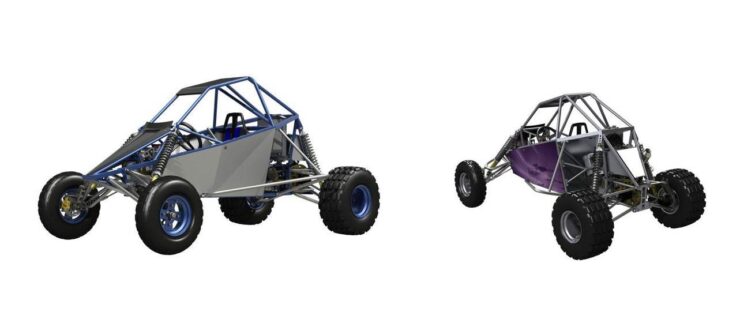
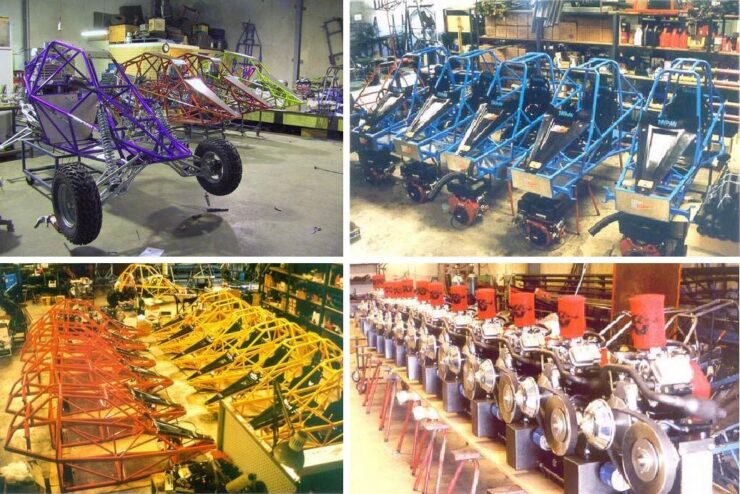
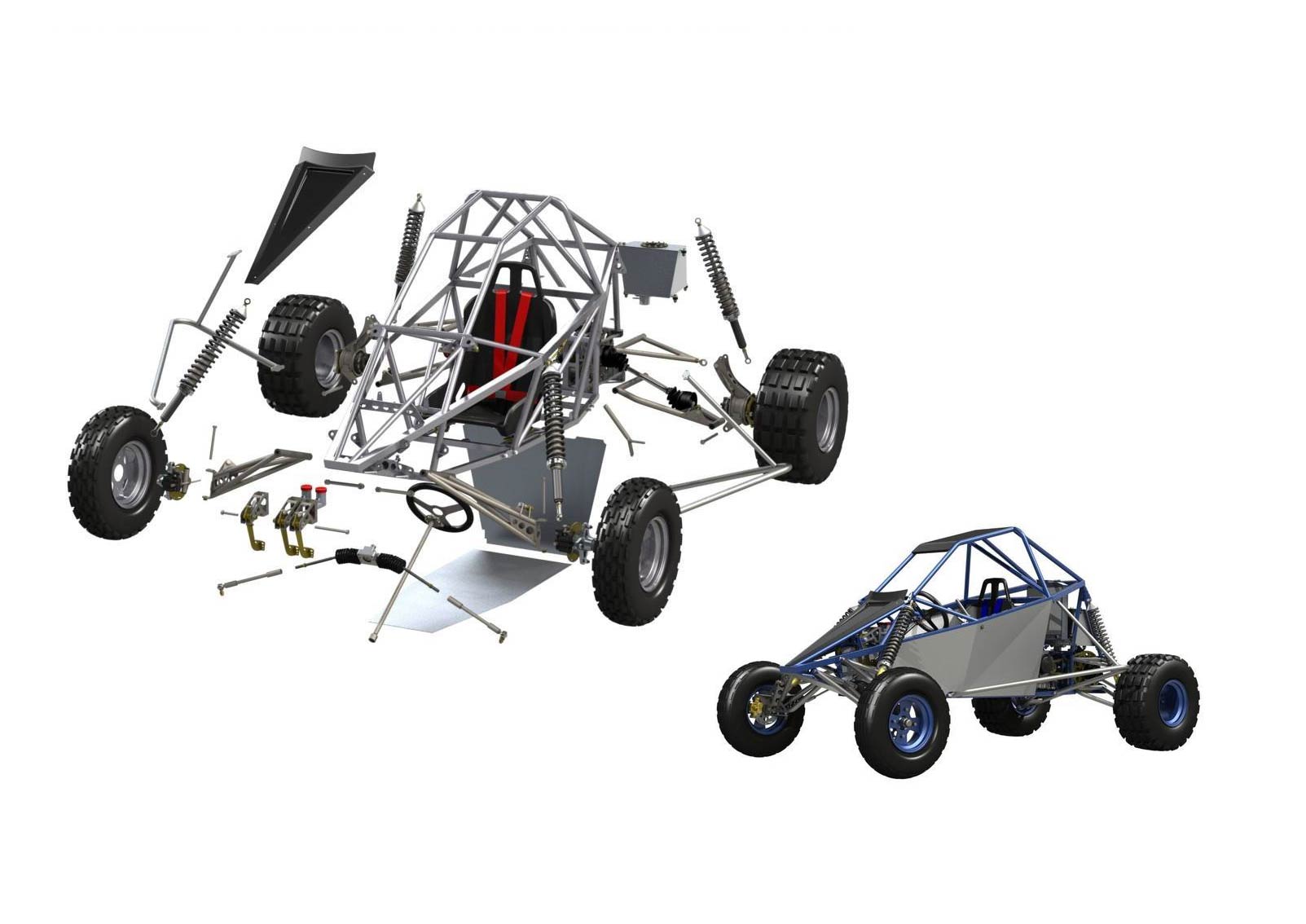
The post The Piranha III Kit: Build Your Own Super Buggy At Home appeared first on Silodrome.
When it was released in 1971 the Fiat 130 Coupe was lauded by reviewers for its excellent handling and balance, its cutting-edge design, and for its well-appointed interior. The styling of the car has been compared to the Ferrari 400 GT, with both cars sharing a similar side profile and angular design language.
Whereas 400 GT values are now pushing $100,000+ USD it’s still possible to buy a Fiat 130 Coupe for a far more affordable $17,500+ USD, the Fiat also enjoys vastly less expensive maintenance costs, though of course it also has considerably less brandname prestige.
The Fiat 130 Coupe was designed by Paolo Martin at Pininfarina, based on the unibody platform used by Gian Paolo Boano to develop the earlier four-door Fiat 130 Saloon car. The 130 series was the successor to the outgoing Fiat 2300 models, which had styling that was well and truly outdated by the late 1960s.
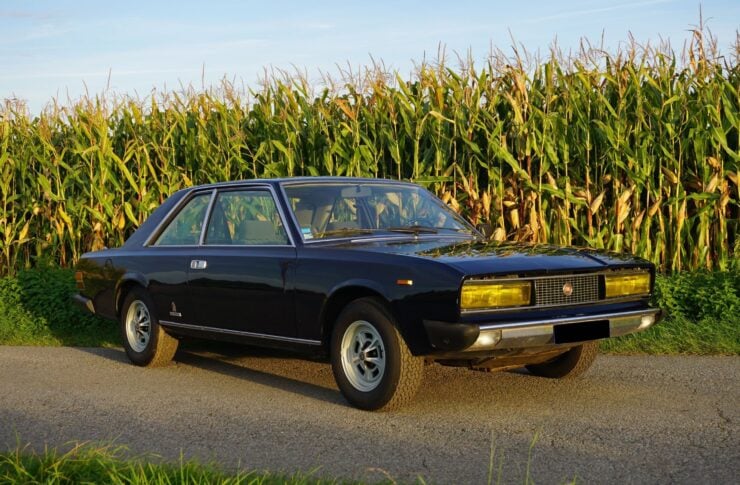
The styling of the car is pure 1970s, it’s won both fans and detractors over the years but it’s now becoming recognized as a desirable (and affordable) classic.
Pininfarina designer Paolo Martin was tasked with designing a new GT coupe for Fiat on the 130 platform, it had to have cutting edge styling, luxury that would rival similar GT cars from Jaguar and Mercedes-Benz, and it needed excellent handling.
Fiat executives saw the 130 series as a new platform that would lead them into the 1970s, and much of the company’s future was riding on it. Martin’s design work on the 130 Coupe was awarded a design prize after its release, and it almost certainly had some small amount of influence on the Ferrari 365 GT4 2+2 which was released a year later with styling by Leonardo Fioravanti at Pininfarina.
The 130 series vehicles utilized standard three-box unibody design, the 130 Coupe has MacPherson struts with longitudinal torsion bars up front and a modified Chapman strut with coil springs in the rear.
ZF power steering came as standard and the steering wheel is adjustable for rake and reach. Paolo Martin’s design work reached into the interior of the car as well, he designed the seats, central console, dashboard, and a number of other features.
In the engine bay you’ll find a crossflow 60º V6 engine that had been designed by former Ferrari engine designer Aurelio Lampredi. This Fiat V6 has an iron block and alloy heads with a single overhead cam per bank and two valves per cylinder, power output was 165 bhp at 5,500 rpm.
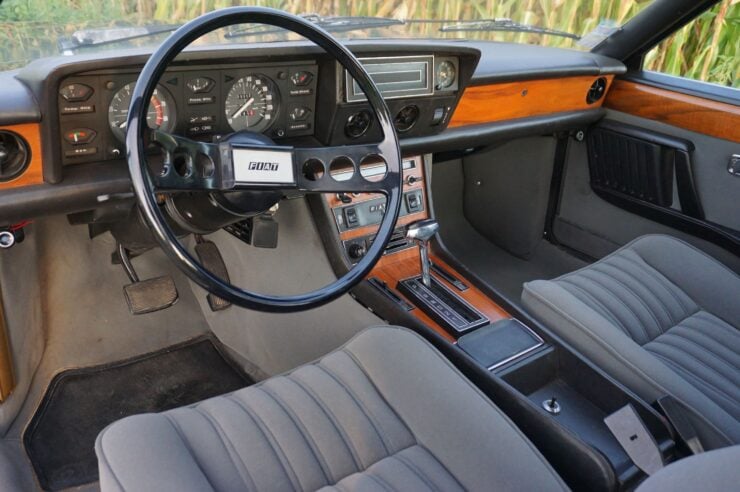
The interior is luxurious by the standards of the era, Fiat wanted the 130 Coupe to compete with similar GT cars from companies like Jaguar and Mercedes-Benz.
Ultimately the Fiat 130 Coupe wouldn’t be a major sales success for Fiat, with fewer than 4,500 made in total between 1971 and 1977. The styling of the car has long been controversial with some loving it and some being less enthusiastic, particularly of the front end, but today it’s becoming recognized as an under-appreciated 1970s classic.
The 130 Coupe you see here is a 1975 model, it received a partial restoration in 2015 with the bodywork and paintwork being redone, the bumpers were re-chromed, and the seats were reupholstered.
While this work was being done the transmission, differential, and universal joints were all overhauled and a new set of Michelin tires were fitted.
The car now presents in generally good overall condition the price guide is $17,500 to $29,000 USD and it’s due to cross the auction block with Artcurial on the 24th of October. If you’d like to read more about it or register to bid you can click here to visit the listing.
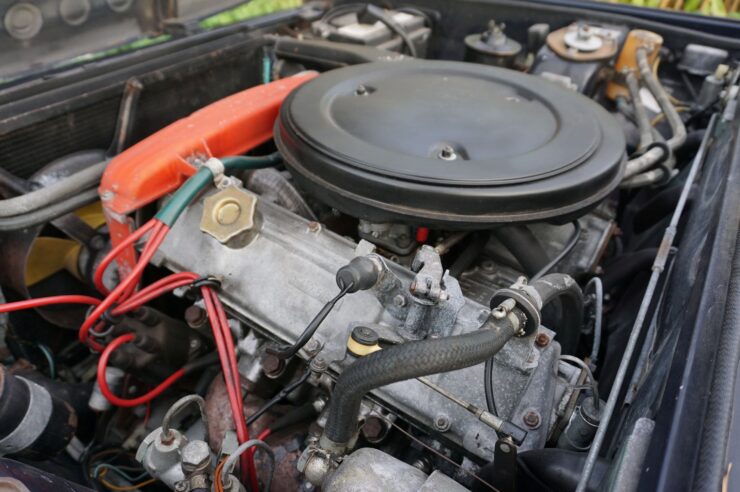
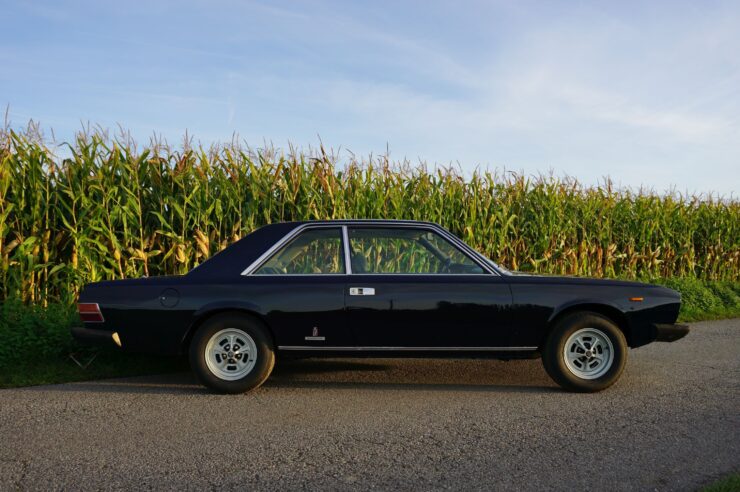
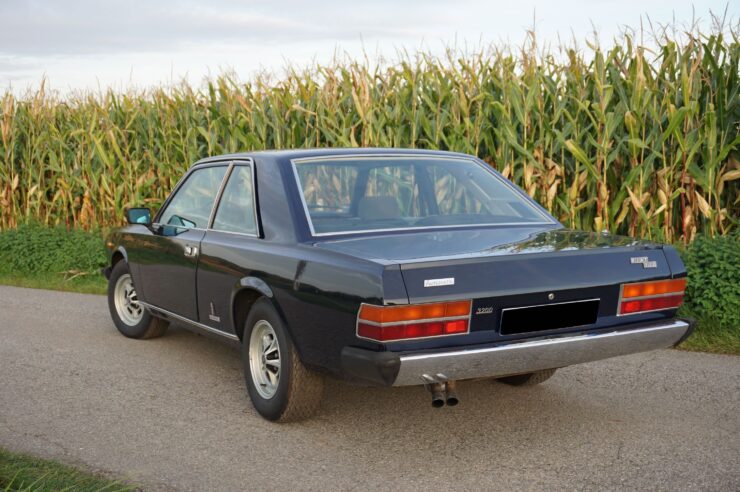
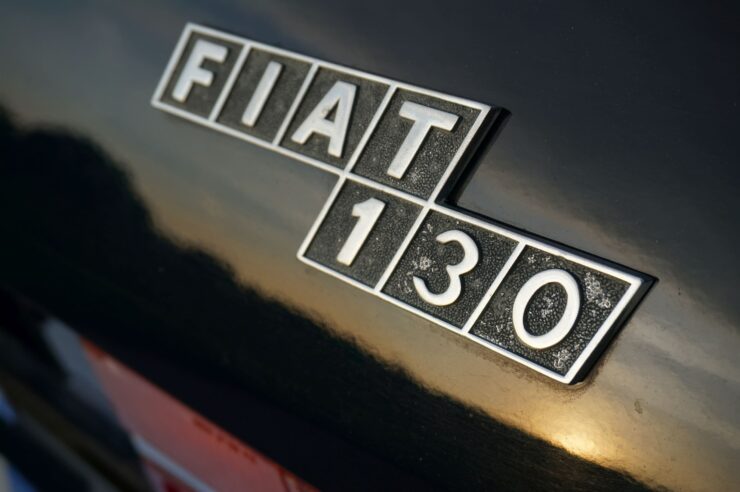
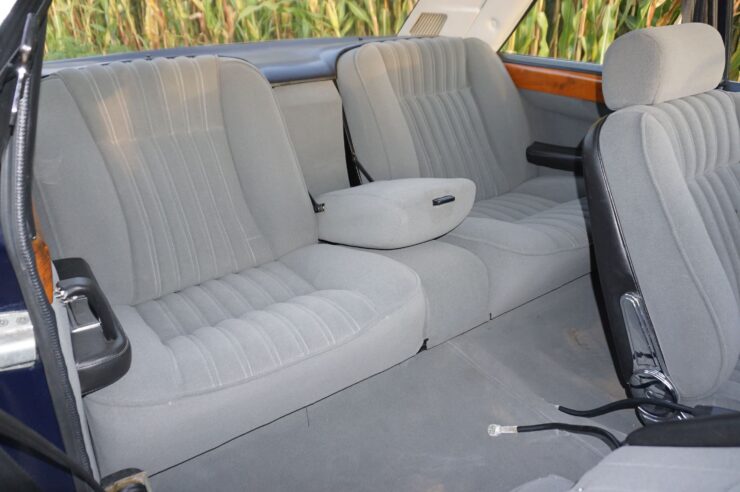
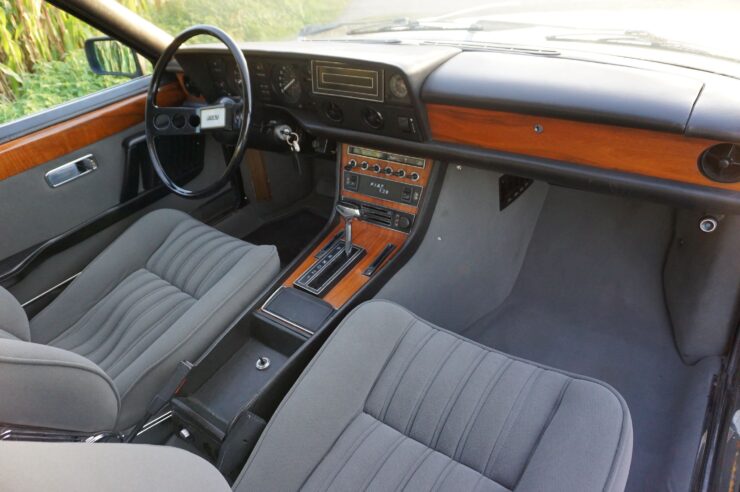
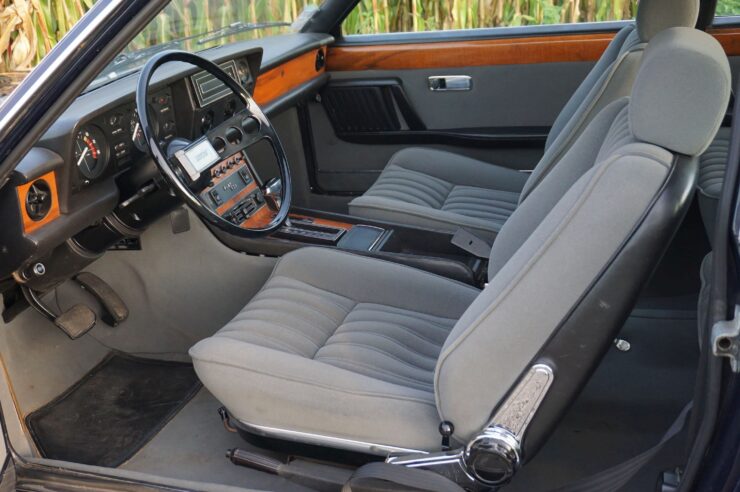
Images courtesy of Artcurial
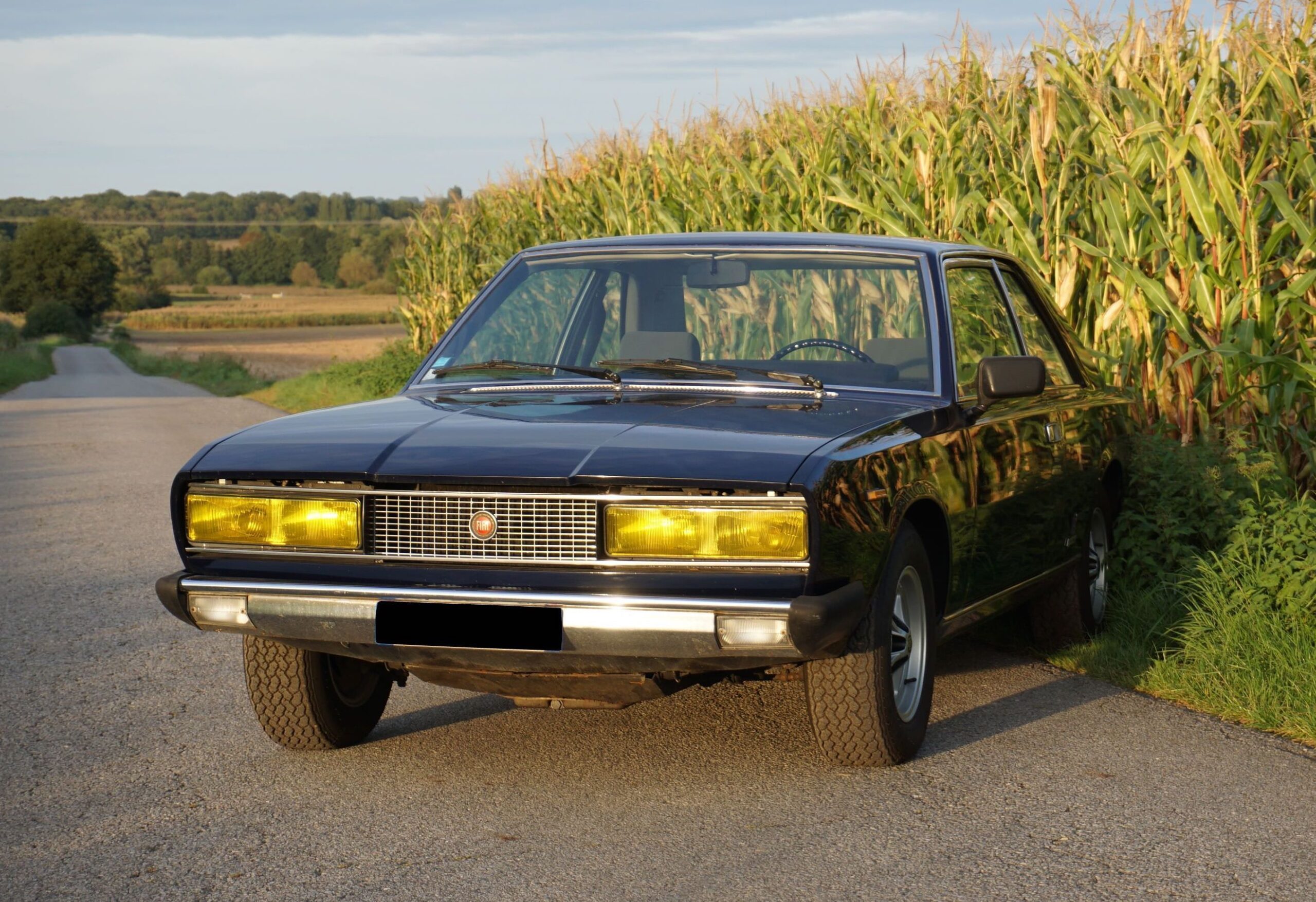
The post The Fiat 130 Coupe: An Affordable 1970s Italian GT Car appeared first on Silodrome.
Very few examples of the Talbot-Lago T14 America Barquette were built, largely due to the precarious financial situation the company found itself in by the end of the 1950s.
The final, and ultimately unsuccessful, attempt to stay in business would see the French automaker building cars fitted with V8 engines sourced from BMW in the hope of appealing to Americans, who liked V8 power and European sports cars.
Unfortunately the strategy would fail, though not for want of effort or aim, the same strategy worked well for a number of other automakers. The car you see here was built from parts left over after the company was acquired by Simca, it was built in the style of the Talbots that raced at Le Mans in 1956 and thanks to its 2.5 liter V8 and lightweight alloy bodywork it’s a quick machine.
In the late 1940s and early 1950s Talbot-Lago was a globally recognized builder of Grand Prix winning race cars and luxurious road-going sports cars.
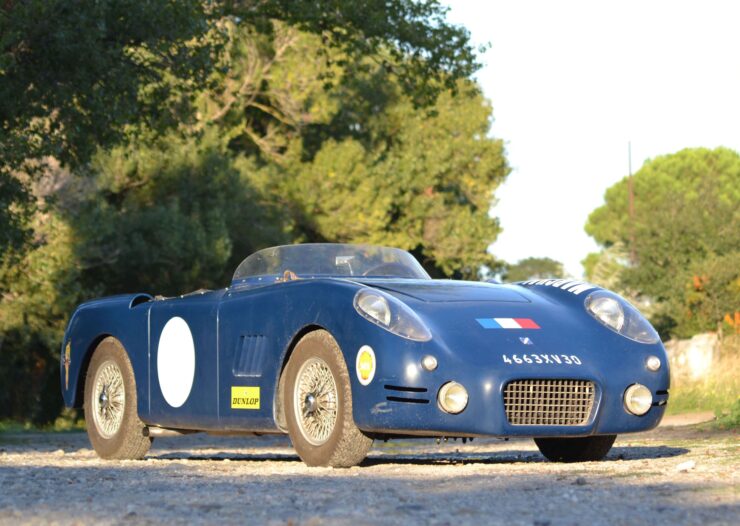
The car was specifically designed to look like the 1956 Le Mans race cars, though it’s likely faster thanks to its vintage BMW V8 engine.
The company had originally started out all the way back in 1896 as Automobiles Darracq France, after being bought out the company was renamed Talbot in 1916 (though they still regularly used the Darracq name), and in 1936 Talbot was acquired by Antonio Lago in a a management buy-out – resulting in the name Talbot-Lago.
Some of the most beautiful cars of the 1930s and 1940s were based on Talbot underpinnings, typically with bodies built by leading coachbuilders like Figoni & Falaschi and Saoutchik.
Antonio Lago had a deep appreciation for the importance of racing for any car manufacturer, as much for publicity as for engineering advancement, and so the Talbot name regularly lined up on the grids of many of the era’s most important races.
One of the company’s most successful cars from this time was the Talbot-Lago T26C, a single-seat race car with a naturally-aspirated 4.5 liter straight-six engine and a four-speed gearbox. The T26C would place second in its first race – the 1948 Monaco Grand Prix, and it would win both the 1949 Belgian Grand Prix and the 1949 French Grand Prix.
A specially modified two-seat version of this car would be entered into the 1950 24 Hours of Le Mans and take outright victory, a major moment for the French brand. The T26C would continue taking wins well into the 1950s, with Doug Whiteford winning the 1952 and 1953 Australian Grand Prix.
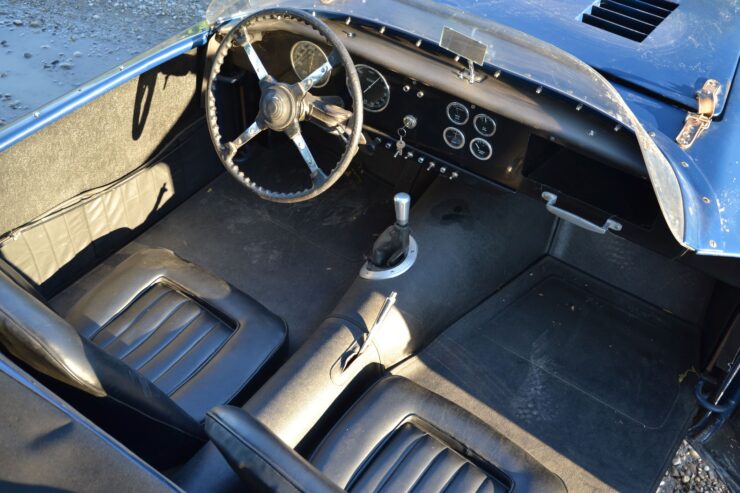
The interior is as spartan as you may expect, with just the essentials. As was normal for a sports/racing roadster in the 1950s the car has no seat belts, no side windows, and no folding top.
In 1954 Talbot-Lago unveiled a new engine called the T14 LS and then a year later in 1955 they unveiled the car that would be powered by it – the beautiful Talbot-Lago 2500 Coupé T14 LS. The engine would be a disaster for the company, it was unreliable and it quickly earned a bad reputation, with little choice in the matter they licensed the new 2.5 liter BMW V8 and renamed the car the “Talbot Lago America.”
Only 12 or so examples of this car would be sold before Anthony Lago realized the writing was on the wall, and accepted the offer from Simca to buy Talbot-Lago and all of its assets in 1958. Simca would continue building the car for a short time, though with their own Ford flathead-derived V8s which were notably less powerful.
Talbot-Lago would be shuttered in 1959, leaving a decades long legacy of road and race cars that still create energetic bidding wars at auction on both sides of the Atlantic and no small amount of subterfuge.
The car you see here only exists thanks to French brothers Dominique and Marc Dupont. Both men were dyed-in-the-wool Talbot lovers, in fact Dominique had been the president of the Talbot Club for many years.
After Talbot was shuttered the two men were able to buy a stock of original parts from former Talbot racing driver Georges Grignard, and they set about creating what would likely be the last Talbot-Lagos ever made.
The Talbot-Lago T14 America Barquette you see here was constructed by the brothers in the 1970s using a correct chassis, mechanical parts, and BMW V8 engine. They had an alloy body built as it would have been back in the mid-1950s, using the style elements of the 1956 Le Mans Talbot-Lago, that had been driven by Louis Rosier and Jean Behra.
Thanks to the car’s very low weight and its relatively powerful 1950s BMW V8 engine it’s capable of impressive performance even by modern standards. It was given a major servicing in 2020 and it’s now being listed for sale with Artcurial.
The price guide is $92,500 – $127,000 USD and you can click here if you’d like to read more about it or register to bid.
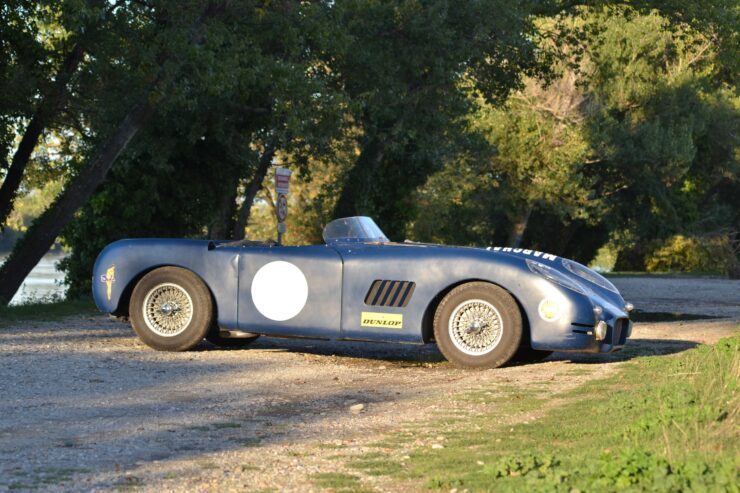
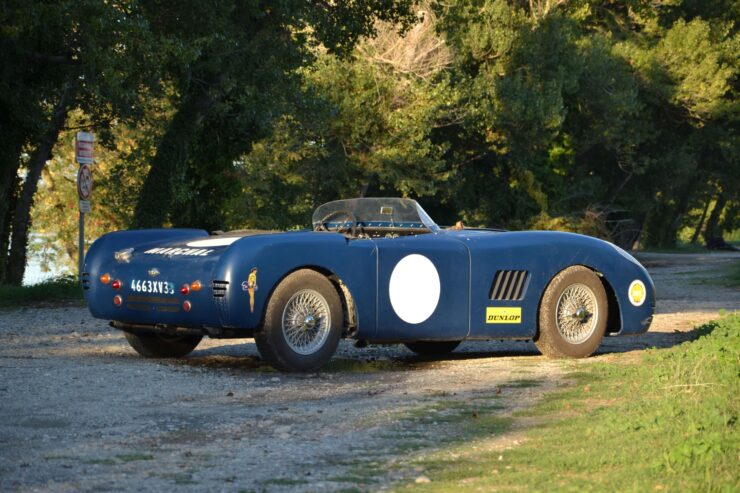
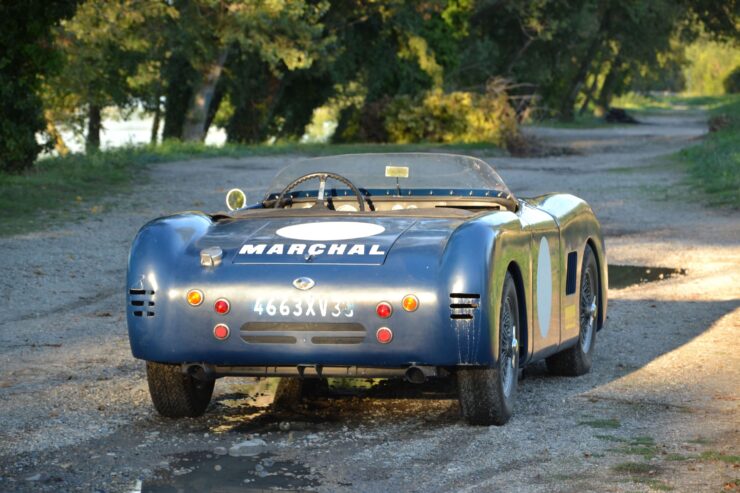
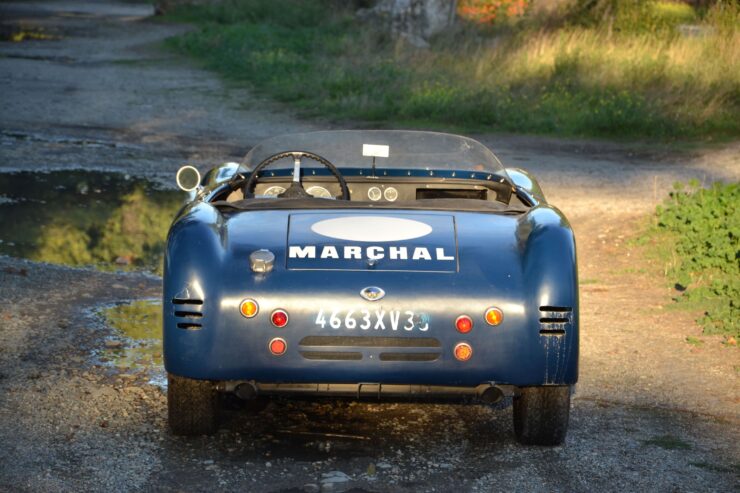
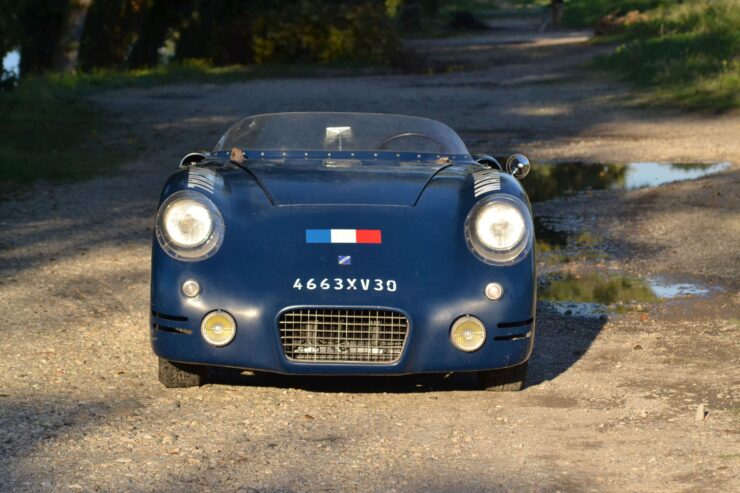
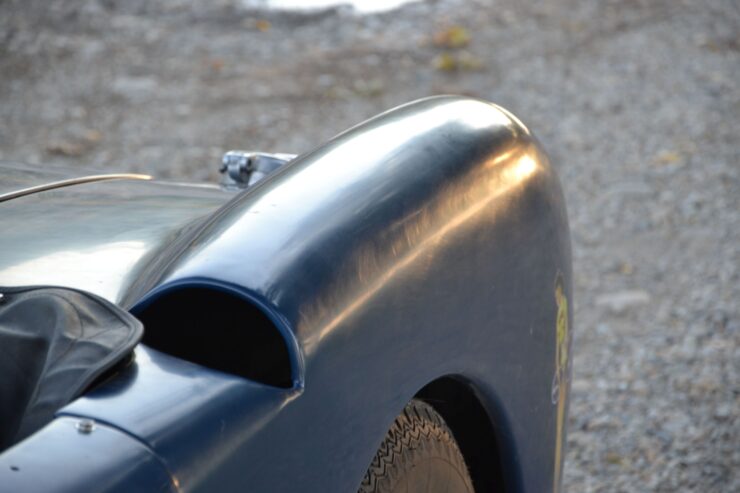
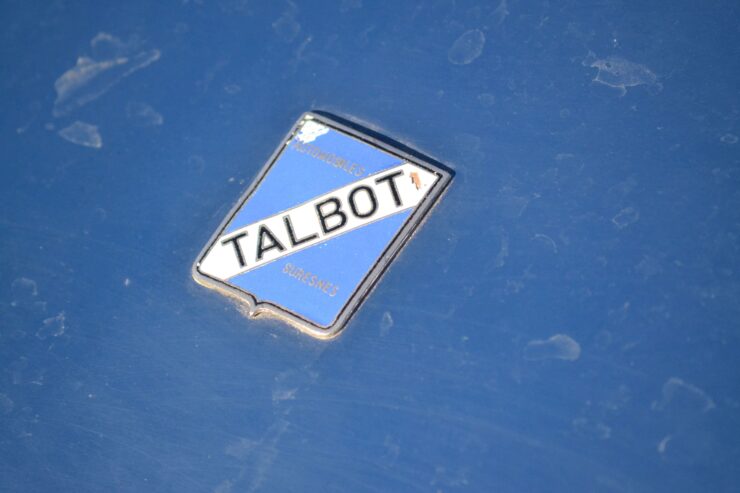
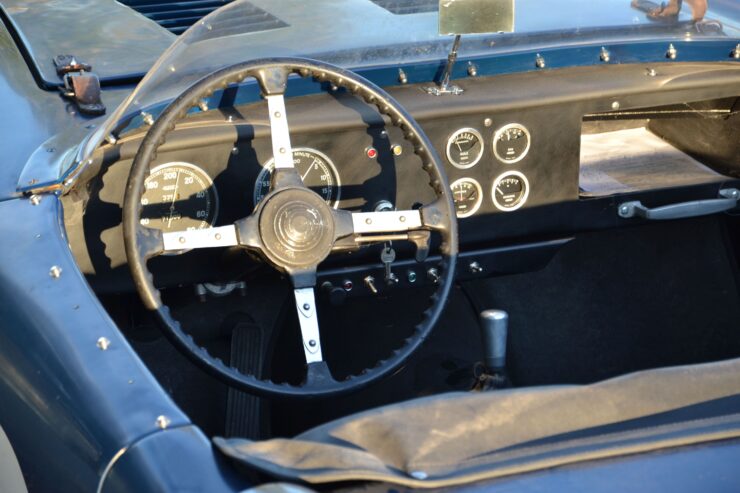
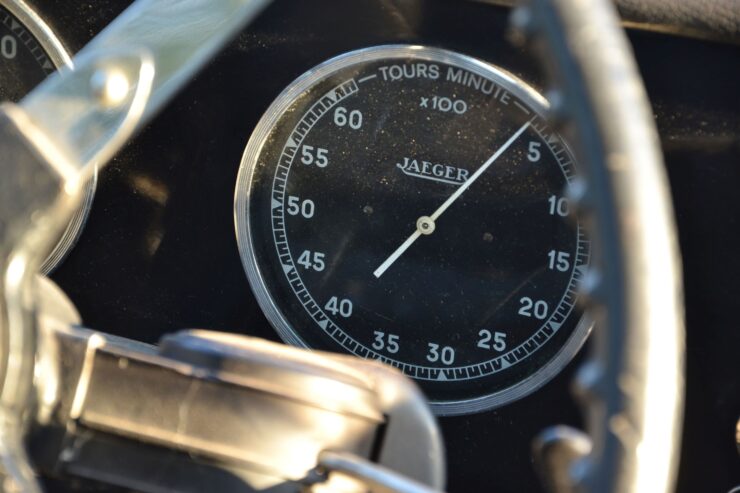
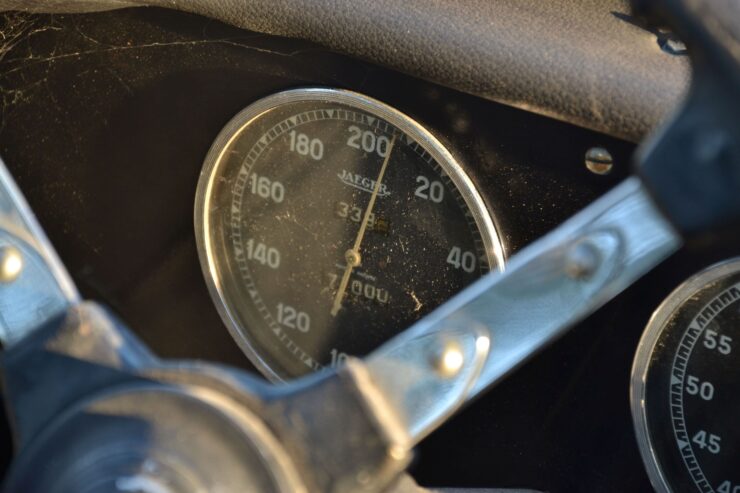
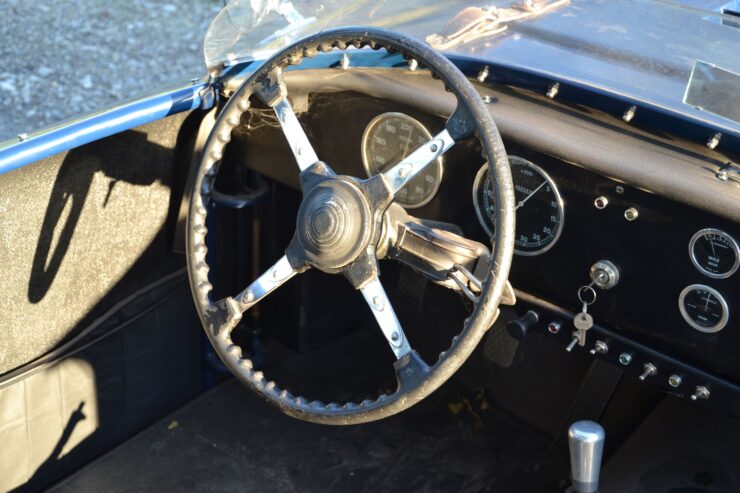
Images courtesy of Artcurial
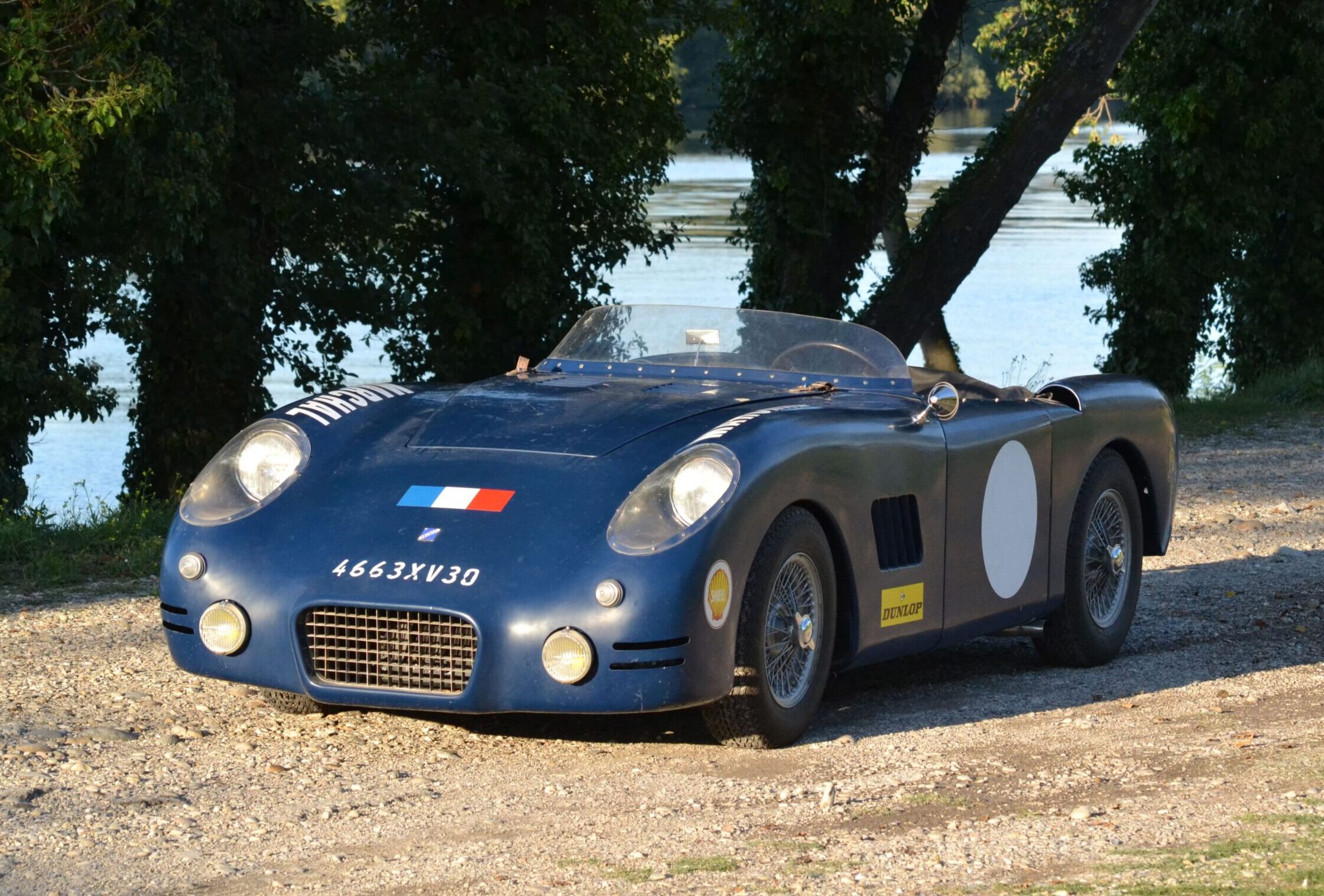
The post A Rare Talbot-Lago T14 America Barquette appeared first on Silodrome.